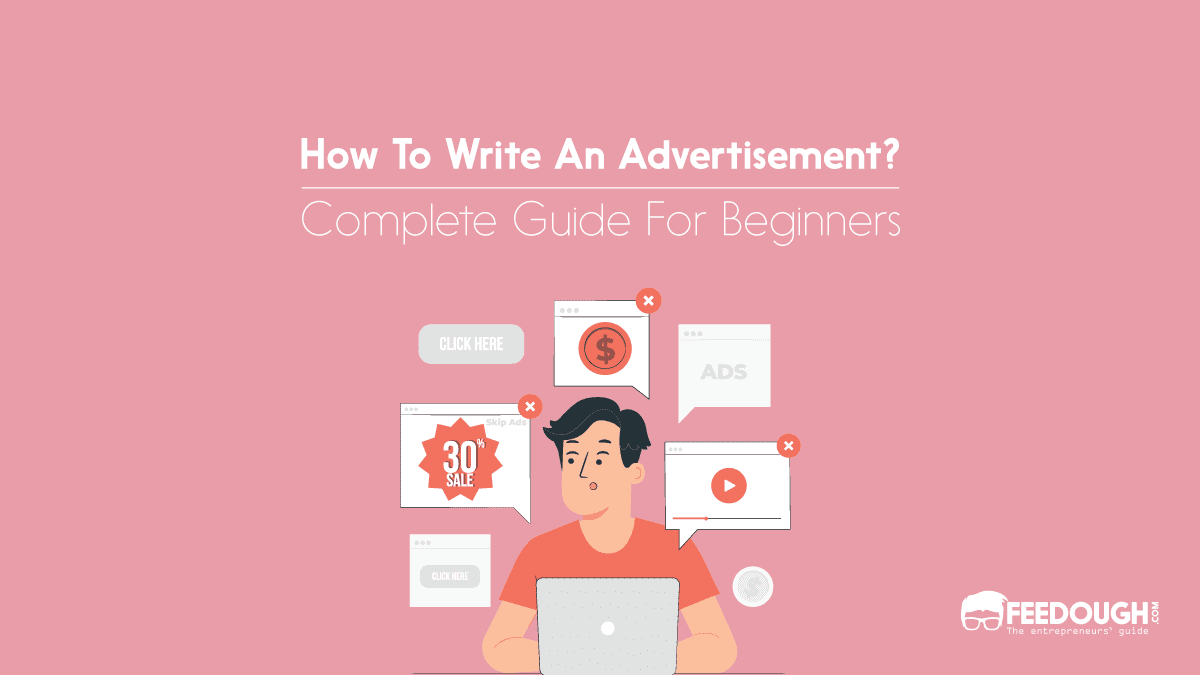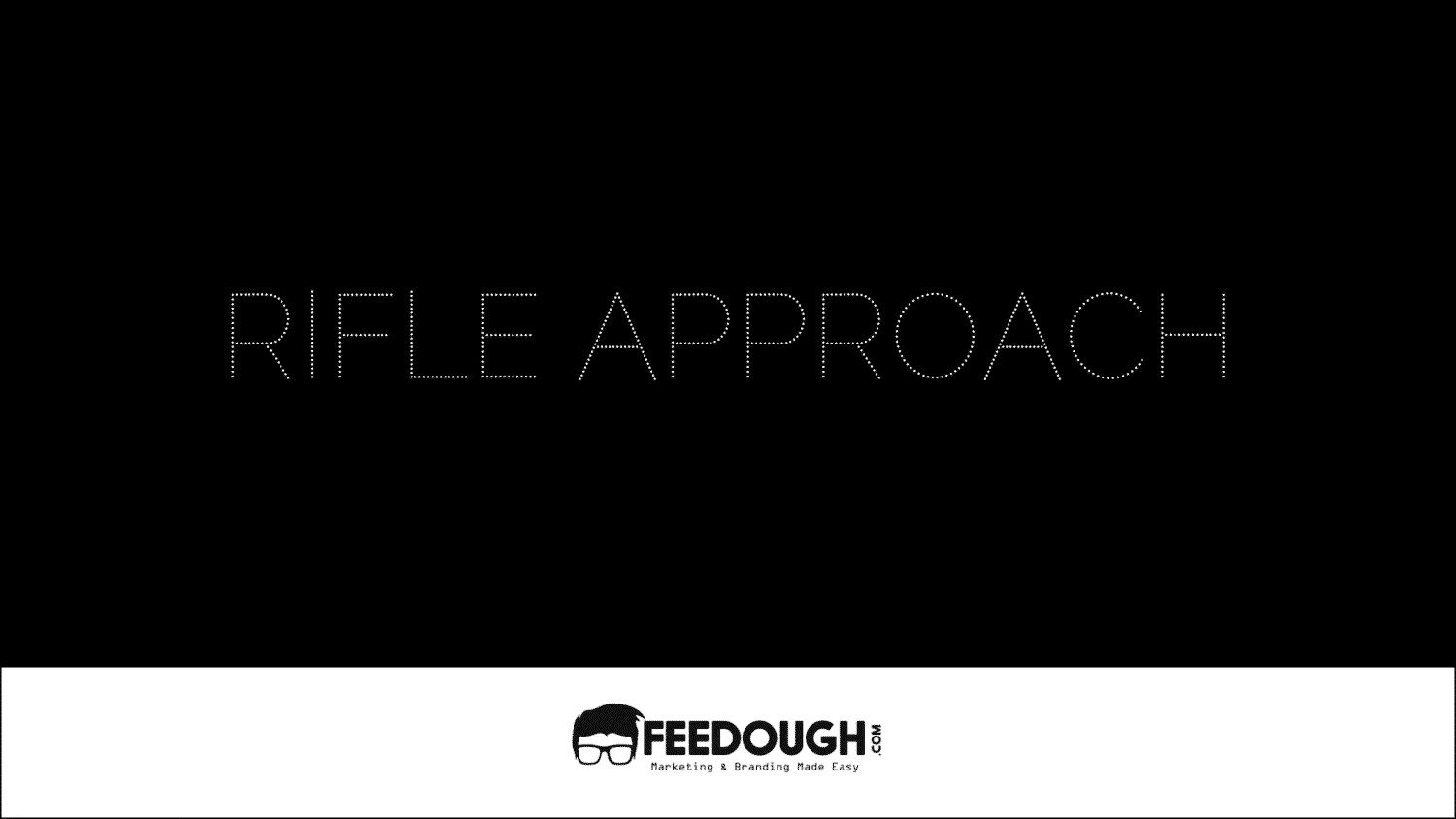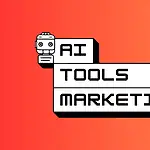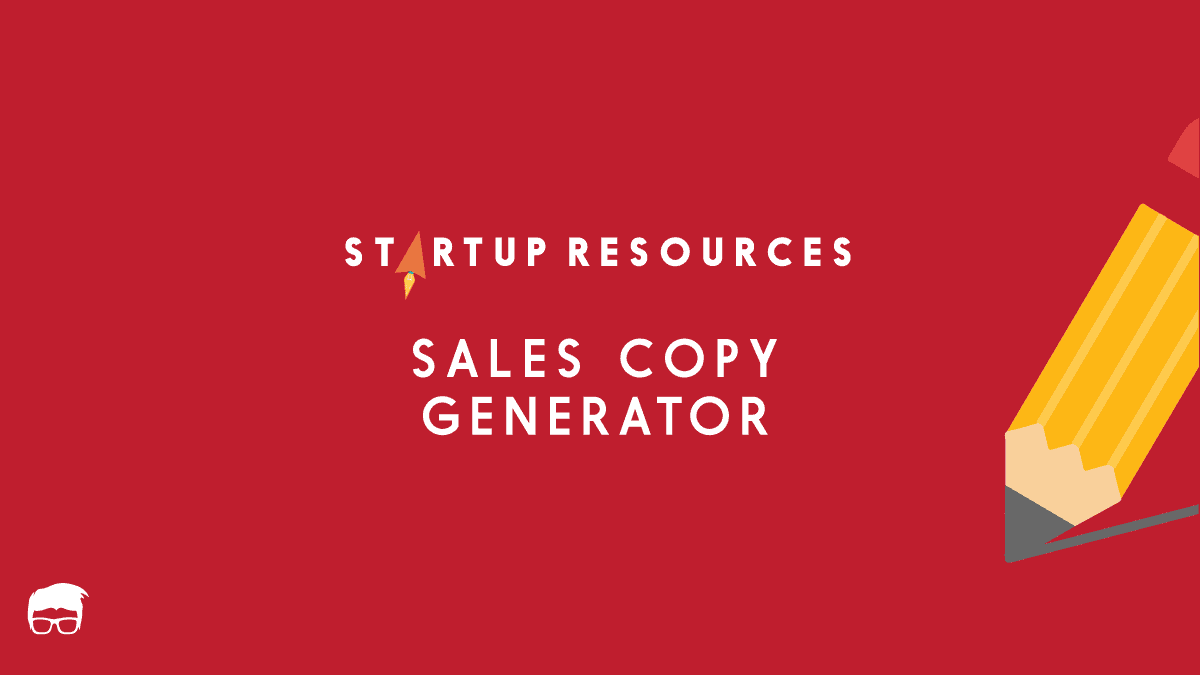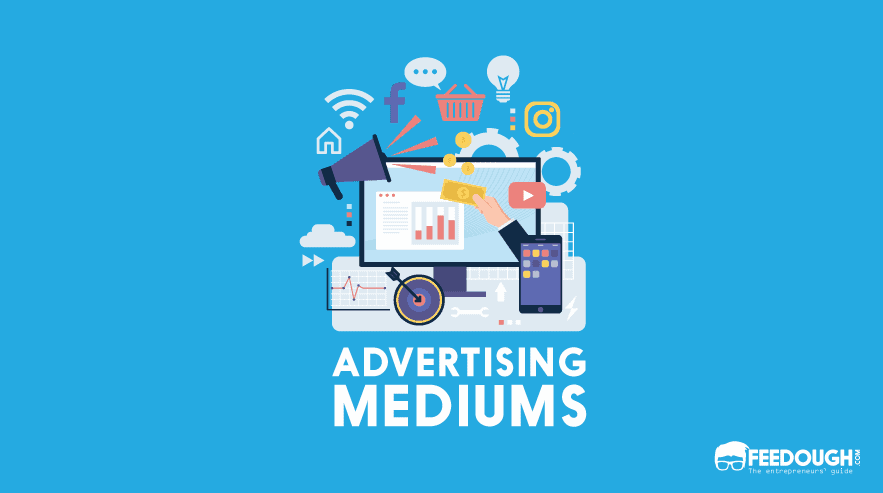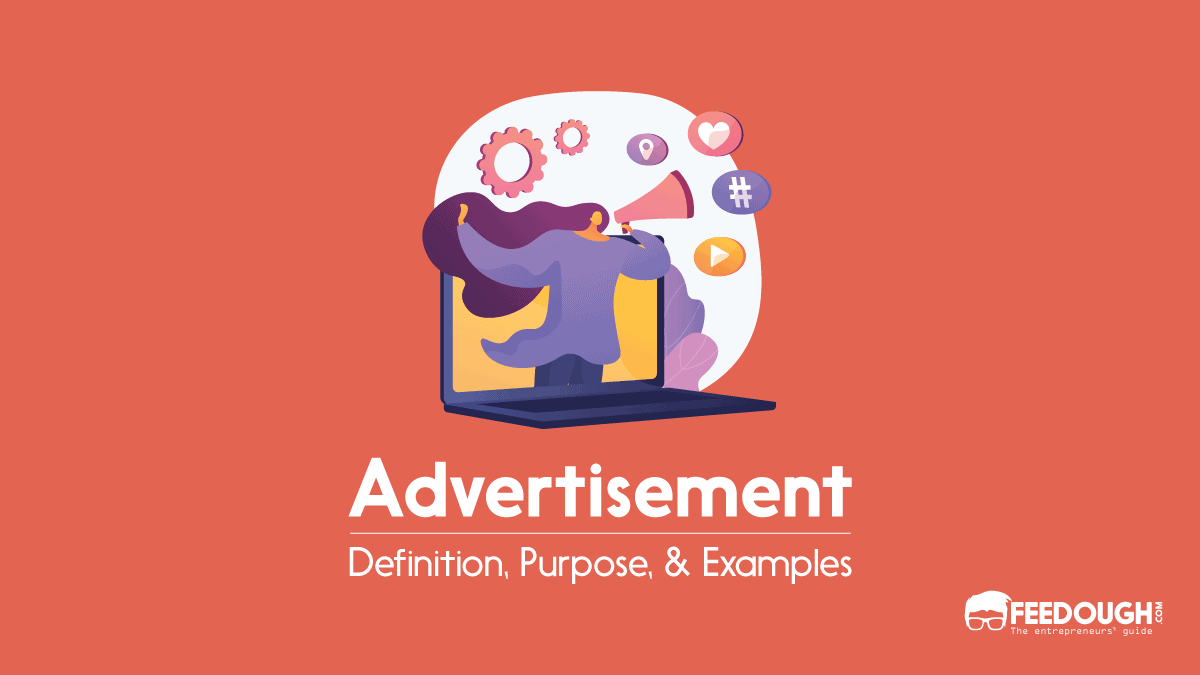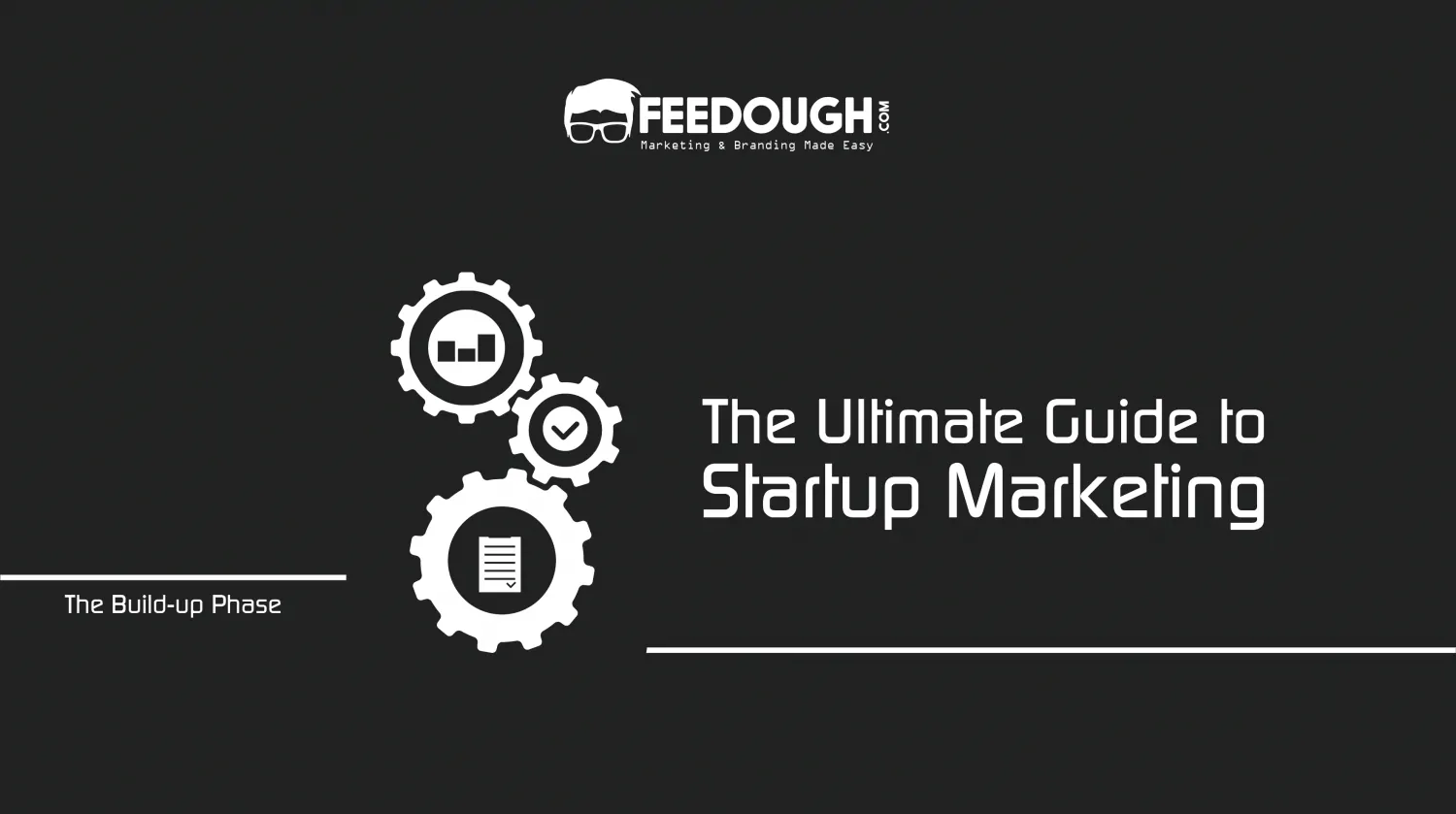Advertising has become a mainstream part of marketing strategies and for marketers to promote any product, service, or brand.
However, crafting a compelling ad copy that captures the attention of your target audience and drives results can be a daunting task. To create effective ad copy, you need to understand the objectives, steps, tips & tricks, frameworks, and mediums that go into it.
This guide provides practical advice to help you write an advertisement that connects with your audience and achieves your marketing goals.
Platform | Description | Use It For | Visit |
|---|---|---|---|
Jasper | An AI-powered platform that provides expertly led templates for businesses and marketers to create high-quality marketing campaign content. | Create the content on expert-made templates. | |
Copy.ai | A platform that provides customisable templates in addition to existing universal templates and multi-language support with the ability to train the AI to produce even more tailored content. | Create copies in a personalised expert tone by training the AI. | |
Copysmith | An AI copywriting platform built for eCommerce teams & agencies that helps to generate and launch SEO-optimised product description copies at scale that converts. | Create content at scale. | |
Frase.ai | An AI writer that helps to research, write, and optimise high-quality SEO content in minutes instead of hours. | SEO content writing | |
Facebook Ads Library | A searchable database that displays every active ad on Facebook and Instagram that includes information on who created the ad, when it was published, and what is its budget. | Research competitors’ ads and get the motivation to create an ad | |
SEMrush | A competitive intelligence tool that allows users to research and track their competitors’ online PPC Ad campaigns and SEO optimisation strategies. | Research competitors’ PPC ads, SEO strategies, and more. |
Before writing an advertisement, it’s essential to consider the audience, different types of ads, and different advertising mediums available to you. It will allow you to choose the most effective method to reach your target audience and achieve your advertising goals. Depending on your objectives and the characteristics of your audience, you can choose to write an online or offline advertisement.
Know Your Audience
To write an effective ad, you need to know your target audience’s age, needs, behaviours, interests, pain points, and more. By identifying the pain points and motivations they need to use a product, you can create messaging that speaks directly to them and increase the likelihood of them taking action on your advertisement.
For instance, suppose you own a website that sells plus-size clothing, and your target audience is people of all ages searching for comfortable, fashionable clothing. Your ad highlights affordable prices and the versatility of clothing options for different occasions.
Once you have identified your audience, you can choose the most appropriate advertising medium to reach them.
Know Your Advertising Objectives
Knowing the ad’s objective before creating it is important because it helps you define what you want to achieve from the ad.
Moreover, setting the right objective will help you define your target audience, craft the right messages, deliver it at the right time, in the right way, and measure results rightly.
For instance, if you want to promote a new restaurant specialising in pizza, you may not create an ad about the restaurant’s entire menu and all dishes. Instead, you could advertise a limited-time offer, such as “Buy one pizza, get one free” or “50% off all pizza orders during lunchtime.
This would attract customers looking for a deal and entice them to try the restaurant’s pizza.
However, there are a few common advertising objectives, which are as follows:
- Increase brand awareness: This objective aims to introduce your brand to a wider audience and make them aware of your brand’s existence.
- Generate leads: The objective here is to capture the attention of your potential customers and encourage them to provide your contact information to them.
- Drive sales: The objective is to encourage customers to purchase your product or service by offering some discounts, special coupons or other offers.
- Build brand loyalty: The goal is to encourage customers to develop a strong emotional connection with your brand and become repeat customers.
- Increase website traffic: The objective is to drive more traffic to your company’s website. It can cater to brand awareness and top-of-mind awareness (TOMA).
- Create a positive brand image: The objective is to shape customers’ perceptions of your brand and create a positive image in their minds.
- Enhance customer engagement: The goal is to encourage the customers to interact with your brand and become more engaged with your products or services.
- Educate customers: The objective is to inform customers about your products or services and their benefits and features.
By setting clear advertising objectives, you can ensure that your advertising campaigns are focused and effective in achieving the desired marketing outcomes.
Choose The Medium
When it comes to creating an advertisement, there are two primary mediums you can choose from: online and offline.
Online advertising effectively reaches a broader audience and targets specific groups based on their online behaviours. Whereas offline advertising effectively reaches local audiences or creates a more personal connection with your target customers.
Online advertising includes social media ads, search engine ads, email marketing, influencer marketing, and more. While offline advertising includes traditional methods such as print ads, television and radio commercials, billboards, direct mail, and more.
Types Of Advertising
You can use a variety of online and offline advertising mediums to roll out your advertisements. Here is a list of a few most popular advertising mediums that you can choose from.
Online
Online advertisements refer to any form of advertising that is hosted digitally on the internet. These include:
- Paid search advertising
- Social media advertising
- Product placement advertising
- SMS Advertising
- Display advertising
- Native advertising
- Email advertising
- Digital signage advertising
- Video advertising
- Re-target and re-market advertising
- Mobile advertising
Offline
Offline advertisement refers to any form of advertising that is conducted outside of digital platforms. These include:
- Print advertising
- Television advertising
- Radio advertising
- Direct mail advertising
- Outdoor advertising
- Trade show advertising
- Billboard ads
- Telemarketing
- Public Relations (PR)
- Promotional products
- Direct response advertising
Writing The Advertisement
No matter if it’s an online or offline advertisement, here are some components you should always include while writing an advertisement:
Heading
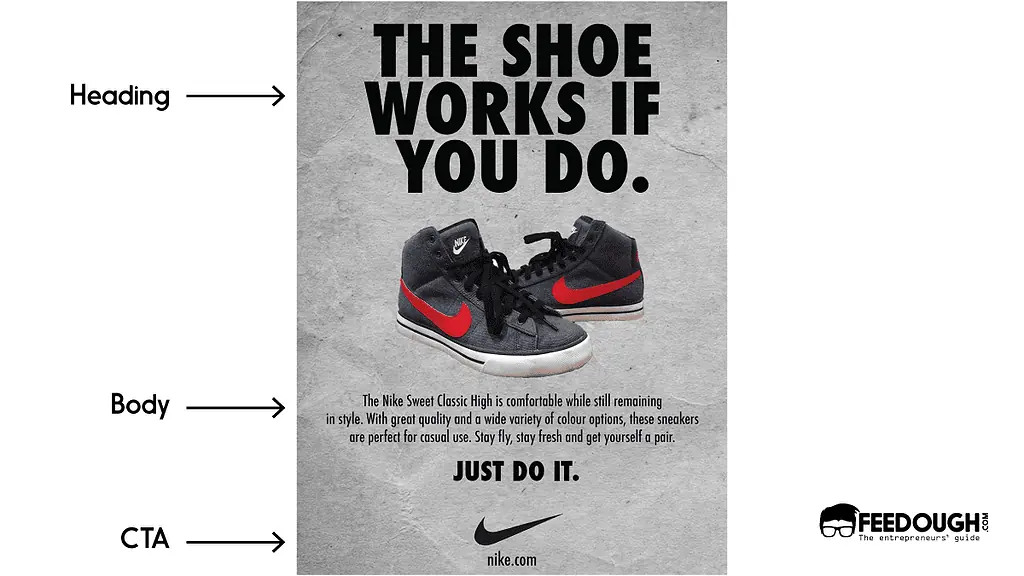
The heading is essential to your advertisement as it is the first thing the reader sees and reads. It should be short, catchy, and attention-grabbing to make them want to keep reading.
For example, if you are selling a new brand of coffee, your heading can be “Wake Up to a Better Brew with XYZ Coffee.”
As a business owner, you might often struggle with creating compelling ads that can boost your site’s traffic and sales due to challenges such as ad type selection, budgeting, and more. The Facebook Ad Library and SEMrush are solutions to this challenge.
The Facebook ad library is a searchable online database that allows you to analyse the current ads being run by any page or advertiser on Facebook and Instagram. By utilising this resource, you can gain insight into ad creator information, publishing dates, ad spend limits, and more to inspire your own ad creation and analyse your competition.
SEMrush is a tool that provides competitive intelligence to you. It also lets you investigate and monitor your competitors’ online PPC advertising campaigns and SEO optimisation strategies. As a copywriter or marketer, you can use SEMrush to analyse your competitors’ content and identify their target keywords. Use this information to create more effective ad copy and optimised content for search engines.
Subheading
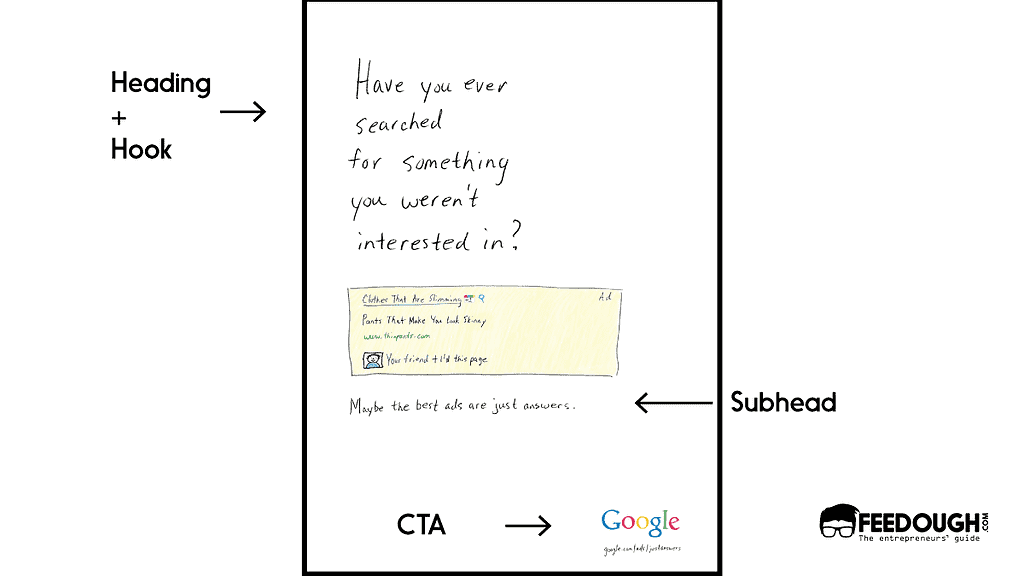
It is a secondary title that provides more information about your product or service to your audience. It should be a bit longer than the heading and give the reader a reason to keep reading. Make it provide more details about your product or service and highlight its unique features.
For example, if you are selling a new brand of coffee, your subhead can be “Our Organic Beans are Sourced from the Finest Farms Around the World.”
Often, markets and writers use keywords in the subheading, making them more search engine friendly to get more visibility.
Moreover, if you need help with SEO in your copywriting, you can always use Frase to optimise your ad content. You can use it to research keywords, topics, and more, write, and optimise high-quality SEO content quickly and easily. Besides, it can also help you paraphrase your existing copies and optimise them for SEO.
Hook
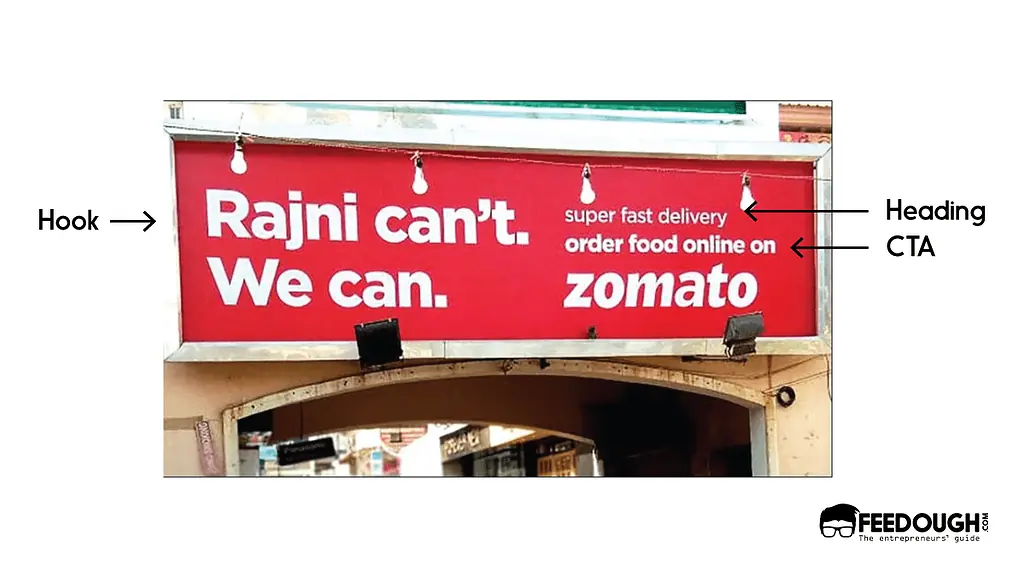
The hook is the opening sentence or phrase that captures the reader’s attention and makes them want to read more. It should be creative and engaging, designed to draw the reader in.
For example, if you are selling a new brand of coffee, your hook can be, “Are you tired of drinking bland, boring coffee every morning?”
In advertising, creating a good hook is essential to capture the reader’s attention and interest them in reading the rest of the ad. However, creating an attention-grabbing hook can be challenging for many writers and marketers. To cater to this need, you can use Copy.ai, a copywriting tool, to generate compelling hooks and other ad content. You can also train the tool with your own pre-written content to create copies that sound like you wrote it. By using copy.ai, you can streamline your ad copywriting process and create more effective advertisements.
Body
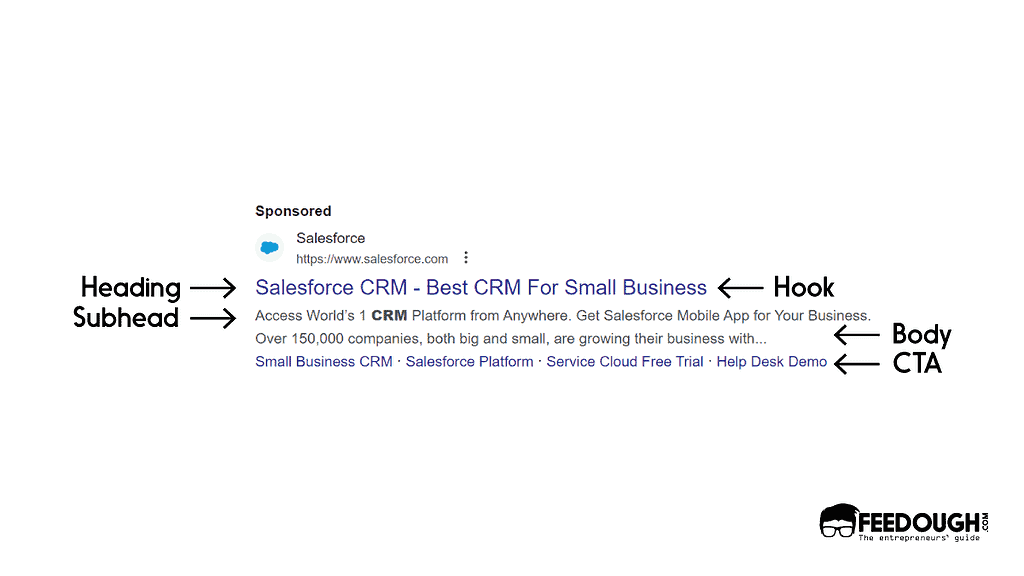
The body is the main part of your advertisement, where you provide more information about your product or service. It should be well-organised, easy to read, and should highlight the benefits of your product or service. Divide the body into short paragraphs, use bullet points, or numbered lists to make it easier to skim.
For example, if you are selling a new brand of coffee, your body could include information about the taste, aroma, and quality of your coffee.
Various frameworks are available for marketers, writers, and advertisers to craft ad content, such as BAB, AIDA, PAS, and more. In writing ads, these or other similar frameworks can provide a structure and formula to follow that can increase the effectiveness of the ad.
However, if studying each framework and writing ads seem overwhelming, you can use Jasper to help you with it. This framework-agnostic tool, Jasper, includes templates for different frameworks developed by experts, allowing the AI to generate optimal ad copies based on the chosen framework for you.
Besides, if you want to create sales copies, product descriptions, Facebook ads, email subject lines, and more at scale, you can use Copysmith for this use case. It has universal templates for different types of content based on their purpose. Those templates will help you create copies at scale. This tool is best for an ecommerce company that wants to create marketing copies at scale or large marketing teams working with several clients.
Call to Action (CTA)
The CTA is part of your advertisement where you have gained the power in your reader’s mind to tell them what to do next. It should be clear and concise and encouraging enough to make the reader take action.
For example, if you are selling a new brand of coffee, your CTA could be “Order Now and Get 10% Off Your First Purchase.”
Popular Copywriting Frameworks
The copywriting frameworks are designed to help you structure your copy in a way that’s easy to read, engage, and persuade. You can precisely use these frameworks to write funnel-oriented copies for your campaign. These funnel-based copywriting frameworks always make your copies attract, hook, and convert better.
Though there are many frameworks a copywriter or the marketer can use in copywriting (apart from what’s mentioned below), here are the seven most useful frameworks you can bring into use.
Attention-Interest-Desire-Action (AIDA)
AIDA is a four-step process designed to get readers to take action.
The AIDA framework goes like this:
- Attention
- Interest
- Desire
- Action
For example, an ad for a new car might use the AIDA framework like this:
- Attention: Are you tired of driving an old car?
- Interest: Our new car has all the latest features.
- Desire: Imagine driving a car that turns heads.
- Action: Visit our dealership today and take a test drive.
Before-After-Bridge (BAB)
The Before-After-Bridge (BAB) framework is a three-part structure commonly used in direct response copy.
The BAB framework goes like this:
- Before
- After
- Bridge
For example, an ad for a weight loss product might use the BAB framework like this:
- Before: Are you tired of feeling overweight and unhealthy?
- After: Imagine feeling confident and healthy in your own skin again
- Bridge: Our weight loss product can help you achieve your goals
Problem-Agitate-Solution (PAS)
The PAS framework is a three-step process designed to help you identify and solve your customer’s problems.
The PAS framework goes like this:
- Problem
- Agitate
- Solution
For example, an ad for a headache medicine might use the PAS framework like this
- Problem: Do you suffer from headaches?
- Agitate: Headaches can be debilitating and ruin your day
- Solution: Our headache medicine can provide fast relief.
Problem-Promise-Proof-Proposal (PPPP):
The PPPP framework is a four-step process designed to help you create a persuasive message.
The PPPP framework goes like this:
- Problem
- Promise
- Proof
- Proposal
For example, an ad for a new software product might use the PPPP framework like this:
- Problem: Are you tired of using outdated software?
- Promise: Our new software is faster and more efficient.
- Proof: Our software has helped businesses increase productivity by 50%.
- Proposal: Try our software today and see the difference for yourself.
Features-Advantages-Benefits (FAB)
The FAB framework is a three-step process designed to help you communicate the value of your product or service.
The FAB framework goes like this:
- Features
- Advantages
- Benefits.
For example, an ad for a new smartphone might use the FAB framework like this:
- Features: Our new smartphone has a 6.5-inch screen and 5G connectivity.
- Advantages: You can watch your favourite movies and TV shows on the go.
- Benefits: Stay connected with your friends and family no matter where you are.
Star-Story-Solution
The Star-Story-Solution framework is a three-step process designed to help you tell a compelling story.
The Star-Story-Solution framework goes like this:
- Star
- Story
- Solution
For example, an ad for a new luxury watch might use the Star-Story-Solution framework like this:
- Star: You deserve the best.
- Story: Our luxury watch is made with the finest materials and craftsmanship
- Solution: Treat yourself to the ultimate luxury with our new watch.
Awareness-Comprehension-Conviction-Action (ACCA)
This four-step framework is designed to help you create a persuasive message.
The ACCA framework goes like this:
- Awareness
- Comprehension
- Conviction
- Action
For example, an ad for a new online course might use the ACCA framework like this:
- Awareness: Do you want to learn a new skill?
- Comprehension: Our online course is designed to teach you everything you need to know.
- Conviction: Our course has helped thousands of people achieve their goals.
- Action: Sign up for our course today and start learning.
Tips To Write An Effective Advertisement
An effective advertisement can make all the difference in selling a product or service. That’s why understanding the key elements of a successful ad and how to craft them is crucial. So, to meet that challenge, let’s learn about the insider’s tips and tricks for writing an effective advertisement that will help you connect with your audience and drive conversions.
Write Powerful Problem-Solutions Eye-Catching Headline
An Ad you create and roll out for your audience must show viewers how your product or service can solve their problem.
Merely plugging in keywords won’t be enough to attract their attention (even though it is the first thing viewers look for).
The powerful way to stand out is to add your visitor’s end goal and promise to help solve their problem in the headline.
For instance, if your user is looking for a home security system, your ad, which says ‘home security system that keeps you safe & gives you peace of mind’, could highlight how it can provide peace of mind by keeping their family and belongings safe.
By showing how you’ll solve their problem and address their pain points, you’ll attract their attention and entice them to take action.
Pen Benefits And Not Features: Show What’s There For Them
When you are writing the body of your ad, it is essential to focus on how your brand or product will improve your visitors’ lives. Because a solution and benefit from a product are what your reader wants.
Thus, instead of starting with how amazing your brand is, tell your visitors how your brand or product will benefit them. Your ad should be personal and demonstrate how your service will solve the user’s problem.
For example, suppose you get to see these two ads when you enter the keyword’ fitness app’
Ad 1 (Benefits-Focused)
Get in the best shape of your life with our fitness app!
With personalised workout plans that fit your busy routine and nutrition tracking, you’ll see real results in no time. Say goodbye to feeling sluggish and hello to a healthier, happier you with 10% savings on your plan.
Lesson: This ad focuses on the benefits that the app provides, such as getting in shape, a program that fits in the busy schedule, seeing results, feeling healthier and happier, and saving 10% on their plan. By highlighting these benefits, the ad is more likely to resonate with potential customers and inspire them to take action.
Ad 2 (Features-Focused)
Our Fitness App Helps You Get Fit
Our fitness app includes personalised workout plans, nutrition tracking, and real-time feedback. Access to a library of exercises and progress monitoring allows you to easily stay on top of your fitness goals.
Lesson: This ad simply lists the app’s features, such as personalised workout plans, nutrition tracking, and exercise libraries. While these features may be necessary to some potential customers, the ad does not explain how the app will benefit them. As a result, it may not be as effective at convincing customers to take action.
Implement FOMO
If you are looking for a way to increase conversions on your website, one simple solution is to implement FOMO the fear of missing out.
Adding FOMO is like giving loss aversion (a real psychological force) to people that motivates them to take action.
To give them the FOMO, you can add countdown timers on your site or tell them they’ll miss out if they miss this deal which is valid for only X hours. Using these types of advertising, you can tap into this force and drive more conversions.
For example, suppose you are a brand that sells mobile phones. So you can write an ad like this implementing FOMO:
- 50+ latest Apple iPhones and Smartphones on sale
- Sales end in 3 hours. Get a 40% discount on all models on sale. Free shipping throughout India. Shop Now!
Creating a sense of scarcity will motivate more people to click through and make a purchase. This is just one of the six principles of persuasion outlined by Robert Cialdini, and it’s a powerful tool for driving conversions in a competitive online marketplace.
Add A Strong Emotional Trigger
As a copywriter, your job is to persuade your audience to take a specific action. One of the most effective ways to do this is to include emotional triggers in your copy.
Emotional triggers are words or phrases that tap into your audience’s emotions and help them connect with your brand or product on a deeper level.
For example, if you’re selling a weight loss supplement, you might use words like ‘transform,’ ‘confidence,’ and ‘healthy’ to trigger feelings of empowerment and self-improvement in the potential users.
Another way to use emotional triggers is to tap into your audience’s pain points. If you are selling a product that solves a specific problem, you can use language highlighting the negative emotions associated with that problem and solutions. For example, if you’re selling a headache medication, you might use words like throbbing,’ ‘debilitating,’ and ‘miserable’ to trigger empathy and urgency in your audience. And ‘feel better,’ ‘get better,’ and ‘get relaxed’ to highlight the solution.
Here is an example of an ad that includes emotional triggers:
Are you tired of feeling self-conscious about your smile?
Our teeth whitening kit can help you transform your smile and boost your confidence! With our easy-to-use kit, you can whiten your teeth at home and achieve a bright, healthy-looking smile in just a few weeks.
Provide A Risk-Free Offer To Take Away Their Fear
One effective copywriting tip to consider is providing a risk-free offer to remove your customers’ fears. People often worry about wasting their hard-earned money on low-quality products or services when there is no return or money-back policy. It makes them hesitant to make a purchase.
However, by offering a risk-free guarantee, you can remove these doubts and incentivise your potential customers to try your product or service.
When potential customers know they can get their money back if they are unsatisfied, they are more likely to give your product or service a chance. It also adds to your brand’s authority because it shows that your company is confident in the value of your offering and willing to stand behind it.
Bottom Line
In conclusion, writing an effective advertisement requires a strategic approach that takes into account many things, including the objectives, target audience, medium, and the right steps for writing the ad.
By following these guidelines and utilising the appropriate frameworks, tips, and tricks, you can create ads that resonate with your audience and drive results for your business.
Ravpreet is an avid writer, prone to penning compelling content that hits the right chord. A startup enthusiast, Ravpreet has written content about startups for over three years and helped them succeed. You can also find her cooking, making singing videos, or walking on quiet streets in her free time.
